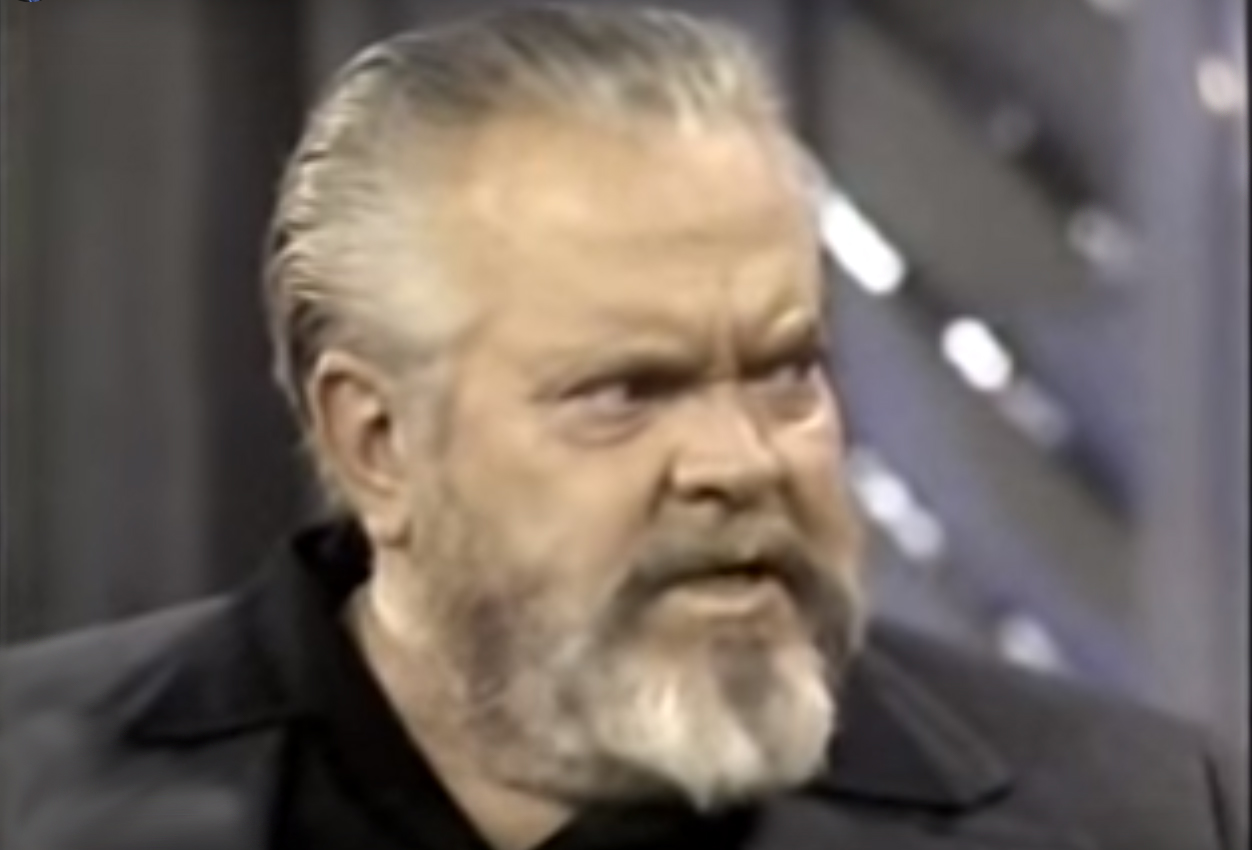Understanding “Audiences” in Transmedia & Web Series
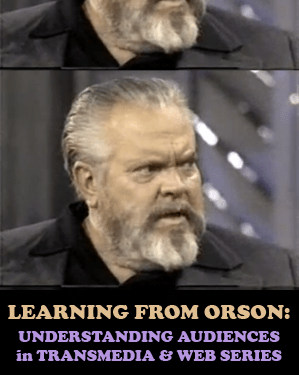
A friend of mine, Robert Mills (Big Comfy Couch, Ruffus the Dog) recently called attention to this gem of a video with Orson Welles explaining the function of audiences and how to tame them/win them over. It is a short clip, less than seven minutes long, but packed with a lot of meat, and I was astounded at its relevance in understanding audiences today: or rather the people formerly known as the audience, as some bemusedly refer to them now for lack of a better term.
The Studio Audience
Orson Welles begins by making a bold declaration:
“Audiences in the real sense of the word are disappearing; there are almost none left. It’s an endangered species.”
Naturally this statement comes as a shock to the studio audience present during this live taping of the Dinah Shore show, but Orson sanguinely explains that the studio audience is not an audience. Because, he states with a bit of cheek, they “got in free.” Welles thus proceeds to address the studio audience directly by stating:
“Not only did you get in free, but you know, as does every studio audience, that you are not here to do anything but to be a member of the cast and help us look good.”
After a round of appreciative applause, Orson adds:
“Have you ever seen a television show where the audience booed and hissed? Or refuse to applaud? It is always a big hit on television, isn’t it? Because the people who come to the show know they are part of the cast and have to help us not look ridiculous.”
Of course this statement was made before the days of Jerry Springer, however Welles’s point regarding the studio audience being part of the cast still stands. So, according to the legendary Orson Welles, then what exactly is a *real* audience? Is the separation between a “real audience” and a “studio audience” (now situated by Welles to be counted with the cast) simply a monetary one? Those who “pay” to get in and those who don’t? On the outset, it might appear to be so, but Orson explains further:
“An audience is a big many headed beast crouching out there in the darkness…waiting to eat us up, or love us, or whatever. And it must be either seduced or tamed, or raped or whatever. And it must be dealt with, because anybody who deals with a real audience, as I have (my goodness think of how long I’ve been in show business: I’ve been hissed and booed at, I’ve had things thrown at me)… Until you’ve had that experience, you don’t understand what dealing with an audience is…”
The key here is that the audience must be dealt with, they must be won over, tamed. This is the function of performance and the performer: to win over the audience (tame the beast). It is the emotional transaction that takes place between the performer and the people sitting in the rows (who do not feel impelled to save the face of the performer) but who are seated in a position of being persuaded to enjoy, to buy in, to swoon. Or to savagely attack.
The *real* audience may have bought a ticket, but they haven’t been sold just yet.
Ambassador Players/Alpha Fans/Influencers
So how does this nuanced understanding of Orson’s studio audience versus the real audience help us understand audiences for transmedia and web series today?
When we understand that the studio audience functions as a cast member in a supportive role to the performance, we can see that their purpose is not much different than ambassadors, super fans, alpha fans (the name is always in flux) usually prefigured in the top triangle of the ever contentious social media engagement pyramid. Once we understand that they function as part of the cast, and not as part of the *real* audience, it helps us to clarify our strategies, particular in regards to UGC and live interactions where the “studio audience” commands a supportive role to the performance overall.
Recently, Trevor Haldenby published his Master’s dissertation, Bringing the Future To Life, regarding his serialized immersive transmedia performance Zed.To/Byologyc (produced by Haldenby and his Mission Business compatriots). In his dissertation I’m quoted as using both the terms: ‘ambassador fan’ and ‘professional player’ to describe my role in the
experiences Conspiracy for Good (CFG) and Zed.To. Both terms I have never felt quite nailed the role I played. Orson Welles’s distinction of the performative role of the studio audience helped me understand why.
The Hardest HardCore Player to ever Core it Hard

Activating and facilitating player engagement during Conspiracy for Good.
I once described myself as “the hardest hardcore player who ever cored it hard” after my experience with Conspiracy for Good, a large scale interactive transmedia property that took to the streets of London back in the summer of 2010. Recognized for my ability to perform a supportive role to the unfolding narrative during the alternate reality game portion of Conspiracy for Good, I was flown in to the UK for the live events (along with another hard core player) where it was felt I could bridge the gap as an ambassador between newcomers on the ground running and the “story so far.” Oftentimes both media and other players alike assumed I was part of the theatrical production, but I had as much insight to “what came next” as did the next player. I was armed, however, with the four month preceding backstory that helped contextualized the characters we were interacting with and our missions. And, being gregarious by nature, I have a unique ability to quickly include and activate new ones unsure of exactly ‘what the hell was going on.’
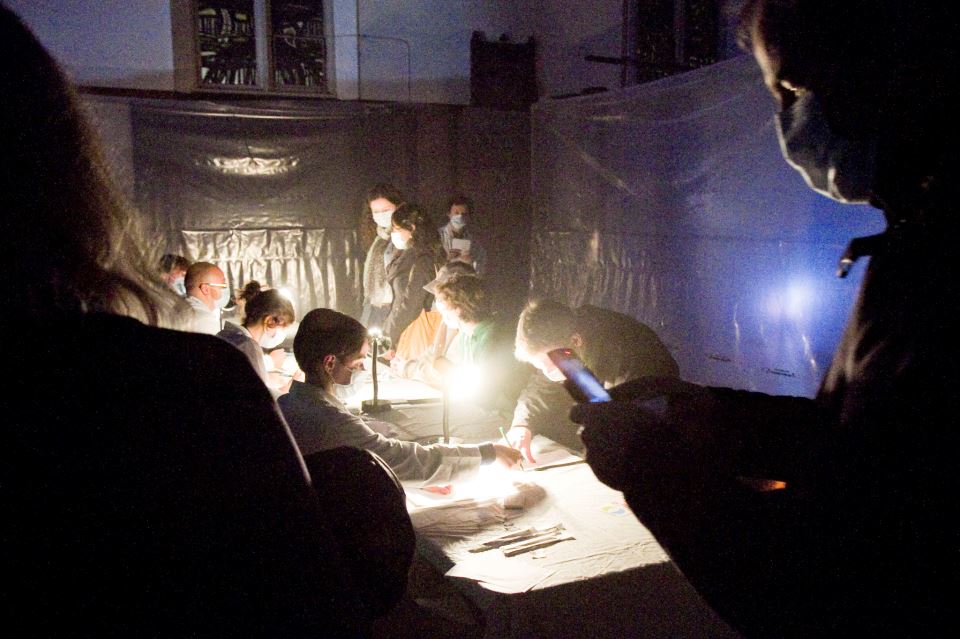
Crossing the “curtain” to play a medic during one of Zed.To’s live events.
During Zed.To, I performed a similar function during live events. I was an “audience member,” but one that understood my role as an ‘influencer,’ pushing the envelope with the actors in terms of role playing and my function as a role model for the *real audience* at the events who are not used to participatory events of this kind. In this role, I earned a reputation with the cast as one of the players to practice one’s chops on. Another player, Sarah Lacelle, quickly went from player to crossing the curtain and eventually became part of the larger storyline as Patient X when she demonstrated a similar ability.
Likewise, Sleep No More is a unique experience where seasoned audience members who have come back again and again act as tour guides and role models to both their friends and other theatre goers.

Do you recognize who this is without his sidekick?
In both the transmedia projects that featured large scale immersive theatrical and participatory experiences, my role for both was in flux: I was neither strictly a ‘player’ or part of the production. For each, I crossed the curtain several times over (both productions had relatively porous curtains as opposed to the more favoured “iron” curtains of traditional ARGs). During CFG, I was unkindly labelled a ‘shill’ by some, a ‘mole’ by others, but I think that to be a misnomer. With Orson’s understanding of “the studio audience,” it becomes clearer that an ambassador player really functions as a cast member in a supportive role, almost in the same way a straight man functions in a comedy team: one who leads the reactions of the audience through the various “muggings” to the slapstick performed by the ‘funny one.’ Great ambassador players set the tone for audience engagement, initially leading by example other players on how to interact, but also, when to pull back. A great ambassador player can quickly diffuse a situation where the audience engagement of other players might turn a bit too boisterous, spinning negative energy back to positive play. Ambassador players, alpha fans and influencers are often the ones who get “in free” or incentivized in other ways precisely for the important role they perform. For Sleep No More, seasoned audience members are rewarded not with free tickets but heightened opportunities for interaction.
For web series, we can often see the effect of the studio audience in the analytics/statistics on the video itself. Oftentimes, viewers will give a video more of a chance when seeing the high view count or thumbs up, modelling the behaviour of the audience that preceded them and not unlike responding to the canned laughter of the now dead “audience” as Orson so morbidly pointed out in the clip. Besides legitimate view counts, “bought” views (referring to the adage: what’s a view?) serve the same function and is a problematic practice that has bitten more than one production in the ass when coming to light.
The Audience Must Be Dealt With

CEO Chet Getram takes control
But it is the performers themselves who must ultimately tame the audience: either by winning them over or by dominating. The fantastic Andrew Moyes, who played nefarious slick CEO Chet Getram of Zed.To, exemplified this extraordinary ability to know exactly when to seduce the players and when to dominate.
One great example was during the climax of the final live event. Players who had purchased the top tier level ticket as board members were situated in making a “Sophie’s Choice” in regards to other players, choosing who would live and who would die among them. As a member of the board during my visit, I and a few other players persuaded the rest to negotiate with Chet for an alternative option (always desiring to put a kink in interactions that limit choice for the furtherance of a strictly played out narrative). But Chet in his role of CEO, a dastardly dude who was king of his kingdom, belligerently refused to negotiate, taking over our ability to interact by beginning to make the choices for us (and wielding a loud speaker to do so), until we conceded to play the game Chet’s way. We had no choice, we simply *had* to give in to this man whose very character would not yield for anyone. But giving in did not feel like a flaw in the narrative design. Giving in to Chet, ultimately, felt as if you had been tamed by his performance.
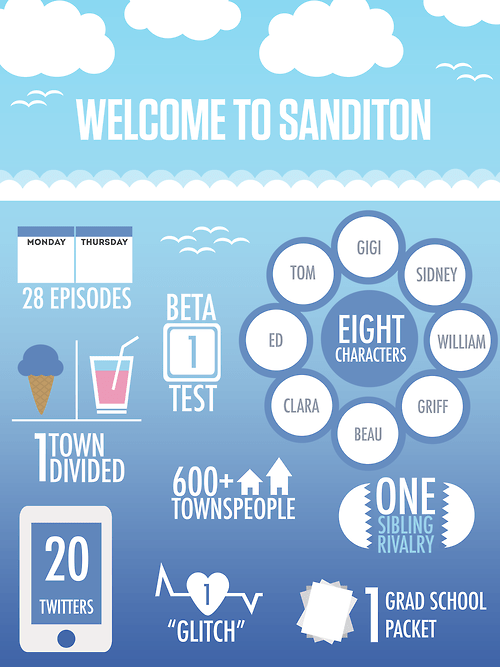
Welcome to Sanditon is a unique example of a web series with a legion of “RPG’ers” (as they are snidely termed by the non-roleplaying audience of the ever sprawling Pemberley Digitalempire). Becoming part of the small fictional town of Sanditon, these hard core fans populated the town with fictional twitter accounts as town members and fixtures. They enthusiastically supported the narrative by interacting both with official/cannon characters as well as by answering the call to action to produce many of the UGC videos featured in the alternating Thursday episode release schedule. They became part of the cast of Welcome to Sanditon in the same way Orson Welles describes the function of the studio audience: supportive to the main performance.
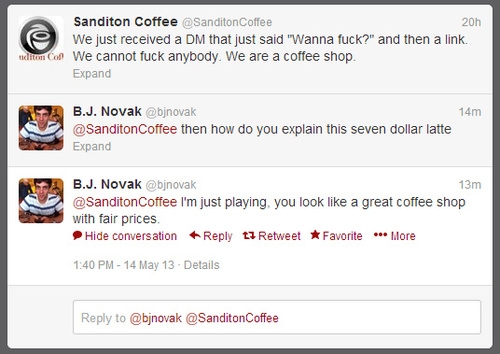
And yet: the *real* audience MUST be dealt with. If the RPG’ers of Welcome to Sanditon can be situated along with the cast in that supportive role, what of the “passive audience” (again a misnomer) who desired only to watch the web series as opposed to engage in the interactivity?
It is interesting to note that Orson Welles made his “little speech” during a time of transition to passive TV audiences in which, in his mind, *real* audiences were almost as extinct as the “dodo.” In the “many years he had been in the show business,” Welles recalled with some nostalgia, being hissed and booed at, things even thrown at him. This recalls to mind the days of Vaudeville and beyond when the audience came armed with tomatoes. It would be interesting to see Welles take on the real audience and the commenters on Youtube videos today. Rather than disappear, the multi-headed beast now often rears its ugly head, unseen, unknown and anonymous in the dark.

And rear its ugly head it did indeed during the short run of Welcome to Sanditon in which the audience could not be tamed by being won over or given into until they got what they wanted
(more “plot!” which seems to be have been redefined by Pemberlites as: climatic resolutions featuring kissing). The very aggressive (and somewhat hormonal) “passive audience” heckled the majority of the videos but pouring most of their vitriol towards the UGC videos (which some ironically had higher views than many of the narrative ones).
Some even threatened to hold the ad revenue gleaned from their views hostage by employing Ad Block for the UGC videos. Understanding their function, the RPG’ers were stalwart supporters of the production and were the first to leap to its defense.
Rather than dealing with the audience directly, Pemberley Digital simply allowed the plot to play out. Part of this is policy, and I wonder how much is influenced by the “iron curtain” days of old. Part of it however was simply due to the logistics of a scripted series that simply cannot change plot on the fly, as vloggers are typically able to respond in real time. In the long run, the strategy seemed to have worked as the audience rolled over in forgiveness once kissing ensued, and even the commenting in the earlier videos have given way to hugs and cuddles. However, it would have been interesting to see if a shift in release strategy might have subdued the beast a bit sooner, or if the characters in the transmedia interactions could have responded to criticisms without ripping the curtain or changing the foreordained plot, or if the release schedule had simply been made more transparent.
Before transmedia strategist Alan Sawyer died, he talked to me about synchronous and asynchronous media in a fascinating discussion that I hope he had preserved his thoughts on the matter somewhere for digestion. One of the points he made was how in today’s media climate, since both synchronous and asynchronous media are often employed in transmedia, there is a confounding expectation by the audience for asynchronous media to behave as if it is synchronous (folding out in real time). This was a continual issue with Welcome to Sanditon’s audience who failed to understand that although the story folded out in real time and the interactions on twitter were responsive and synchronous, the production of the videos long predated the release of the season. The majority of the videos could only be asynchronous but the demand by the audience was for the production to respond to their demands on the fly. This tension between audience and the realities of production seemed to be resolved once the series officially “ended”, so that new audiences viewing the show for the first time seem to be much more reasonable in their expectations as the comment section demonstrates.
In The Can
However, much of the interactivity of the experience (which was synchronous) is now static (asynchronous) via the archive of the experience. It is ironic that in the video clip above, Orson talked about how “the little black box full of laughter” (laugh tracks) are comprised of now dead people. However, today the performances are ‘canned’ while the audience is live for the long tail, and their fury and/or ardour can endure long after the curtain has closed.
How can one tame the beast long after the performance has officially ended? The ones who solve the problem of this inverse paradigm either through platform solutions and transmedia strategies but also in managing the expectations of the audience will answer the question of the ages.
Web series and transmedia producers do well to plan for this long tail through a little simple community management foresight putting best social media engagement practices and transmedia strategies in place to keep the beast subdued and sweet for the long shelf life of the property.

